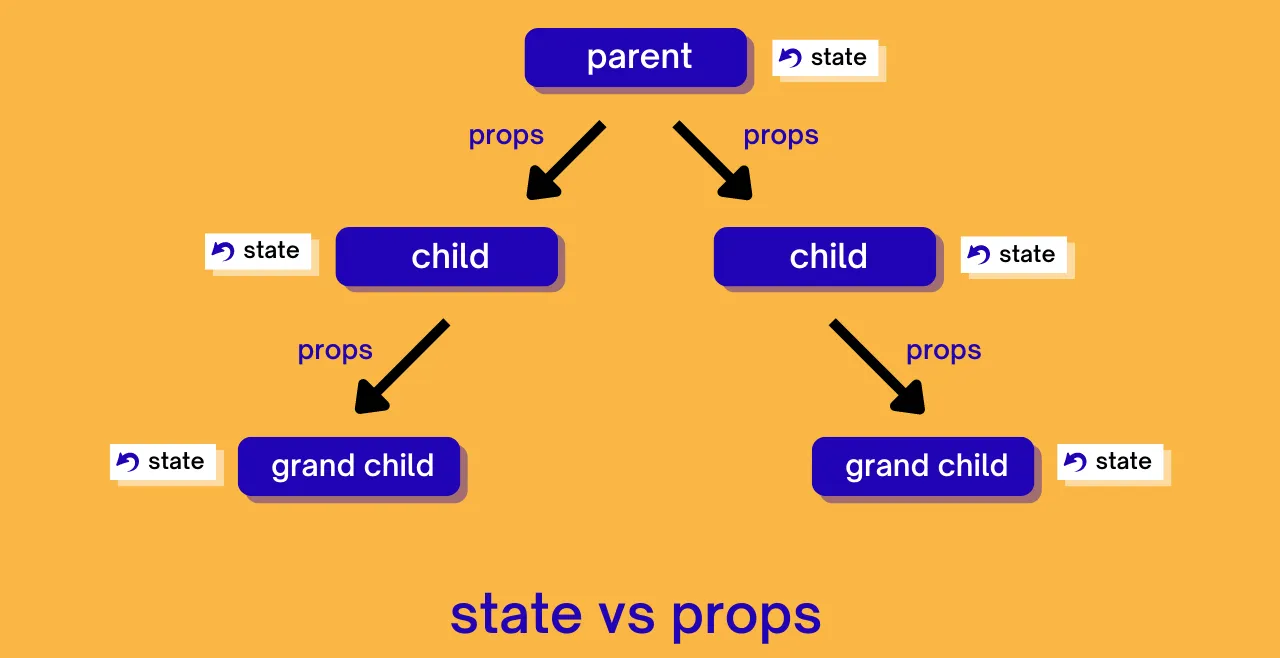When starting your journey to conquer React, one of the first and most important concepts you'll encounter is Props. So what are props? Why do they play such a foundational role in building React applications?

This article will decode everything you need to know about props, from basic concepts, how they work, to advanced techniques and best practices. Whether you're a complete beginner or have some experience, let's explore together!
What are Props? Understanding Simply Through an Analogy 🤷♂️
Imagine you have components in React like different people. For them to interact and work together, they need to exchange information. Props (short for "properties") are the "gifts" or "information" that a parent component sends to a child component.
More technically, props are an object containing read-only properties passed from a parent component down to a child component.
The key point to remember is: Props are immutable. Child components can only "read" the props sent to them but cannot arbitrarily change them. This is like receiving a pre-wrapped gift - you can use it but cannot change the nature of that gift. This principle ensures one-way data flow in React, making applications more predictable and easier to debug.
Why are Props Important?
Props are the heart of component reusability and composition in React. They are important for the following reasons:
-
Component Reusability: You can create a common component (e.g.,
Button,Card,Avatar) and use it in many different places in your application just by passing in different props.- Example: The same
Buttoncomponent can display "Login" text with blue color, or "Cancel" text with red color, all thanks to changing thetextandcolorprops.
- Example: The same
-
Top-down Data Flow: Data in React flows from top to bottom (from parent to child). Props are the only means to implement this flow. This creates a solid architecture where you can easily trace the origin of data. Think of it like a waterfall 💧, where water only flows in one direction.
-
Separation and Specialization: Props allow child components to focus on their task (displaying the interface) without worrying about where the data comes from. Parent components are responsible for logic and providing data.
How Props Work: From Passing to Receiving
The process of working with props consists of two main steps: passing props from parent and receiving props in child.
1. Passing Props
Passing props looks very similar to how you add attributes to an HTML tag.
Suppose we have a UserProfile component and want to display a greeting.
// In parent component (e.g., App.js)
import React from 'react'
import UserProfile from './UserProfile'
function App() {
return (
<div>
{/* Pass 'name' and 'age' props to UserProfile component */}
<UserProfile name="Alice" age={25} />
<UserProfile name="Bob" age={30} />
</div>
)
}
export default App
In the example above, name="Alice" and age={25} are the props being passed to the UserProfile component. Note that props can be any data type in JavaScript: strings, numbers, arrays, objects, functions, etc.
2. Receiving and Using Props
Child components will receive these props as an object.
For Function Components (modern and popular approach):
You can receive props as a function parameter. "Destructuring" technique is commonly used for cleaner code.
// In child component (UserProfile.js)
import React from 'react'
// Method 1: Receive the entire props object
function UserProfile(props) {
return (
<div>
<h1>Welcome, {props.name}!</h1>
<p>Your age is: {props.age}</p>
</div>
)
}
export default UserProfile
// In child component (UserProfile.js)
import React from 'react'
// Method 2: Use destructuring to get values directly (recommended)
function UserProfile({ name, age }) {
return (
<div className="user-profile">
<h1>Welcome, {name}!</h1>
<p>Your age is: {age}</p>
</div>
)
}
export default UserProfile
For Class Components (older approach):
Props are accessed through this.props.
import React from 'react'
class UserProfile extends React.Component {
render() {
return (
<div className="user-profile">
<h1>Welcome, {this.props.name}!</h1>
<p>Your age is: {this.props.age}</p>
</div>
)
}
}
export default UserProfile
Props vs. State: The Classic Showdown ⚔️
Beginners often confuse Props and State. These are two core concepts but serve completely different purposes.

| Criteria | Props | State |
|---|---|---|
| Origin | Passed from parent component. | Managed inside the component itself. |
| Mutability | Immutable (Read-only). Cannot be changed by child component. | Mutable. Can be changed using setState (Class) or useState (Function). |
| Purpose | Used to pass data and configure child components. | Used to manage internal data that can change based on user interaction. |
| Similar Example | Like a person's birth date (fixed). | Like a person's mood (can change). |
Golden Rule: If a component needs to change its own data (e.g., counter, input content, open/close state), use State. If a component only needs to display data received from outside, use Props.
Special Types of Props and Best Practices ✅
To use props professionally, you should know about the following techniques:
1. children prop
This is a special prop that allows you to nest components or JSX inside another component. Anything you place between the opening and closing tags of a component will be passed as props.children.
// Card.js component
function Card({ children }) {
return <div className="card">{children}</div>
}
// Usage in App.js
;<Card>
{/* All of this is the props.children of Card */}
<h2>Article Title</h2>
<p>This is the content inside the Card component.</p>
</Card>
2. defaultProps
Helps you define default values for props in case they are not passed from the parent component.
function Button({ color, text }) {
return <button style={{ backgroundColor: color }}>{text}</button>
}
// Define default values
Button.defaultProps = {
color: 'gray',
text: 'Click Me',
}
// <Button /> will have gray color and "Click Me" text
// <Button color="blue" text="Submit" /> will override default values
3. PropTypes
To ensure robust and maintainable code, you should check the data types of props. PropTypes helps you warn of errors if a prop is passed with the wrong data type.
import PropTypes from 'prop-types'
function UserProfile({ name, age, isVerified }) {
// ...
}
// Define data types for props
UserProfile.propTypes = {
name: PropTypes.string.isRequired, // String, and required
age: PropTypes.number, // Number, not required
isVerified: PropTypes.bool, // Boolean type
}
Conclusion: Props are an Important Concept to Master
Mastering props is not just a basic requirement but also an important stepping stone to help you build complex, well-structured, and maintainable React applications. Remember that: props are the "messengers" carrying information from top to bottom, operating on the principle of immutability and are the main tool for creating flexible, reusable components.
I hope this article has given you a comprehensive and deep understanding of props. Good luck on your React programming journey!
![[React Basics] State in React: Concepts, Usage, and Detailed Examples](/images/blog/state-in-react-thumbnail.webp)
![[React Basics] Everything About Redux in React: Definition, Principles and Detailed Examples](/images/blog/redux-in-react.webp)
![[React Basics] React Context: Concept & Most Effective Usage](/images/blog/understanding-react-context.webp)
![[React Basics] What is React Router? Complete Guide for Beginners](/images/blog/react-router-thumbnail.webp)